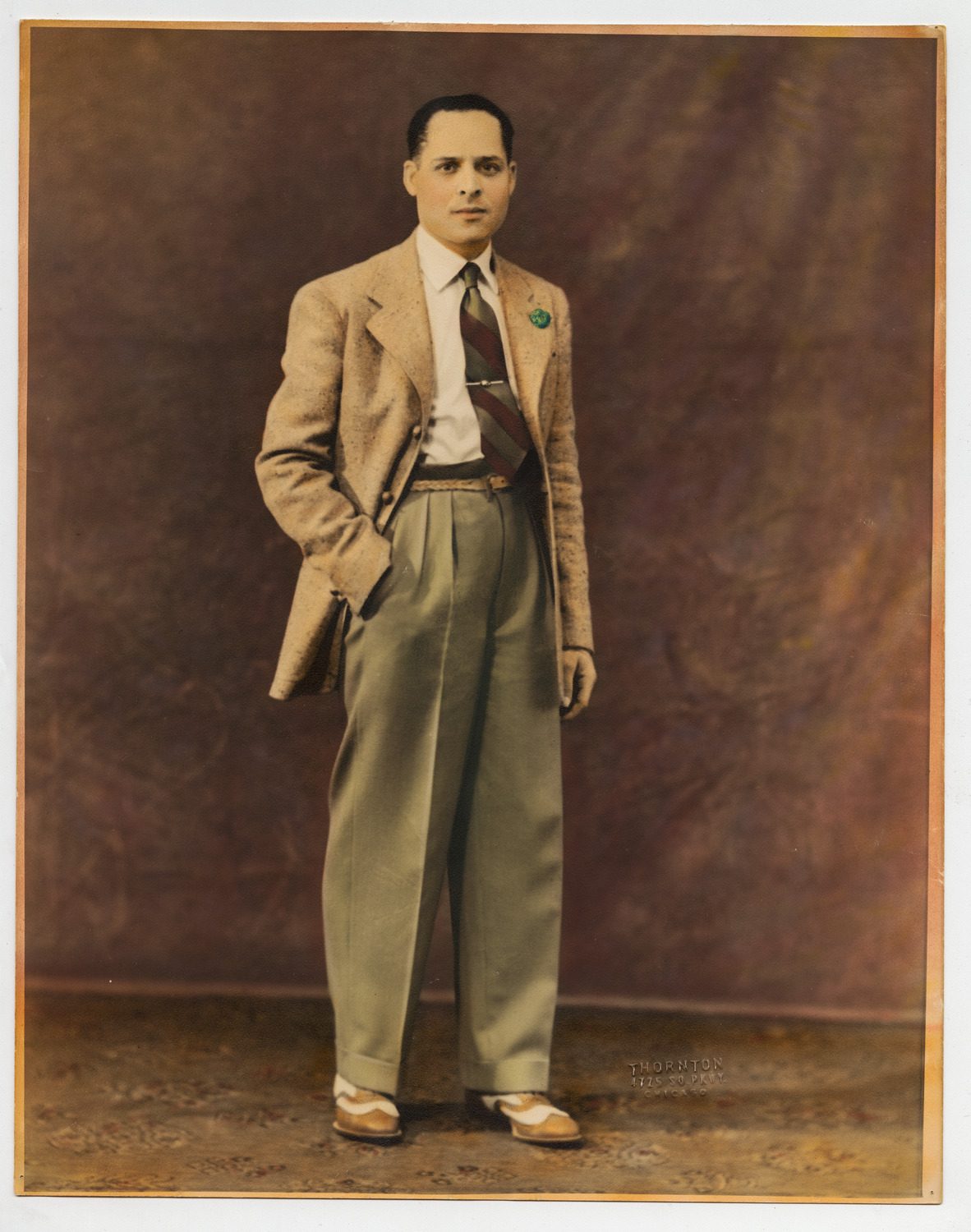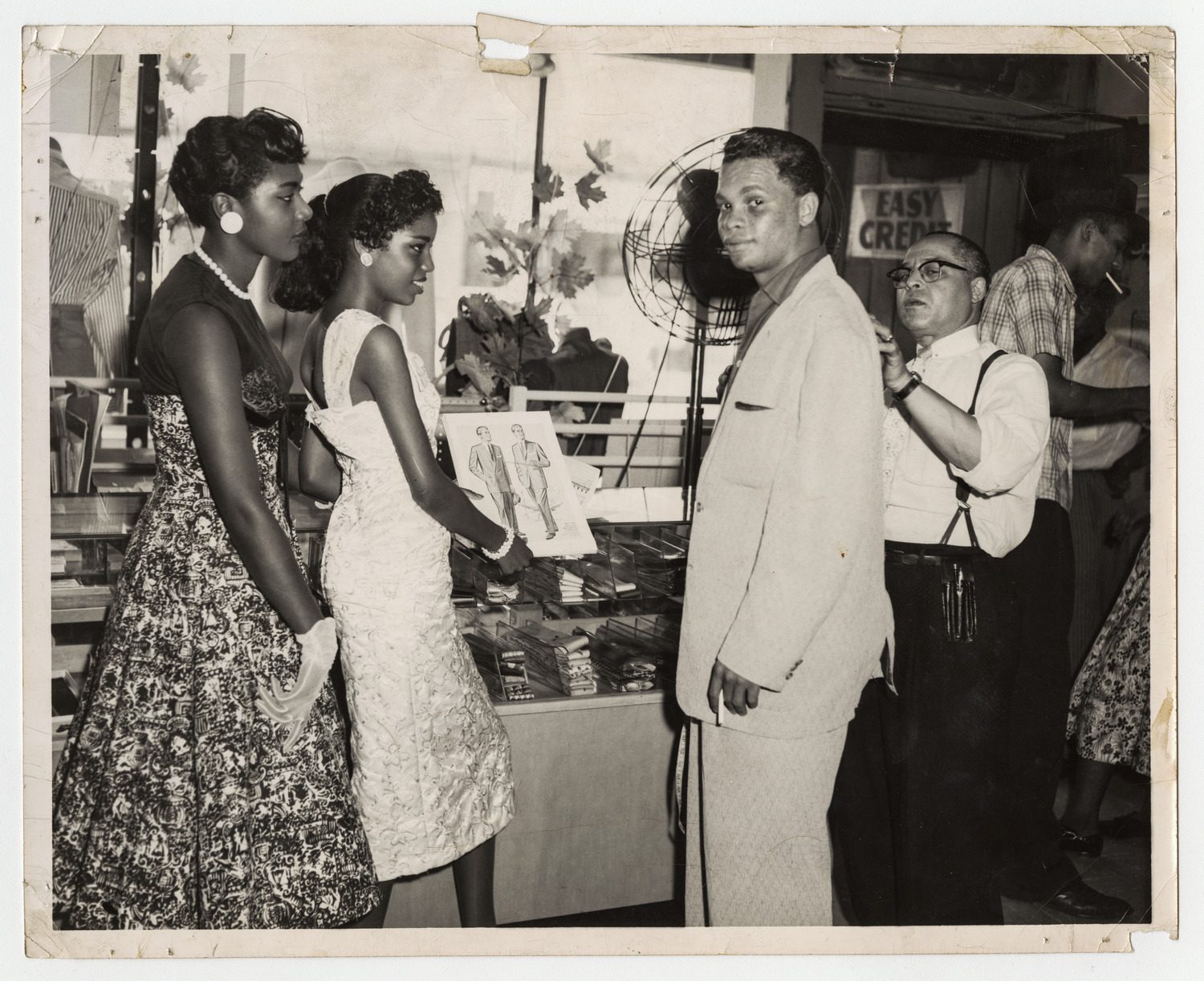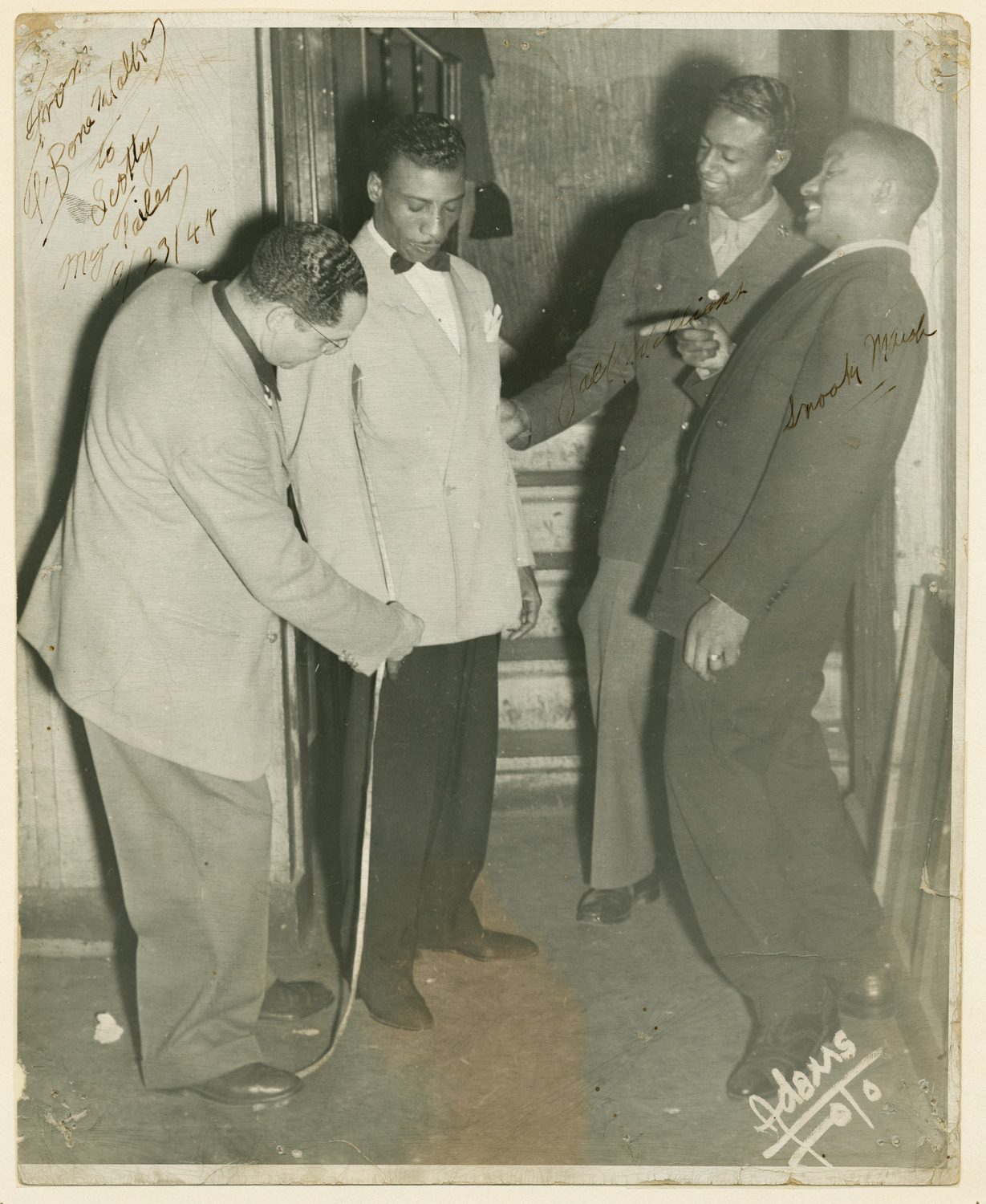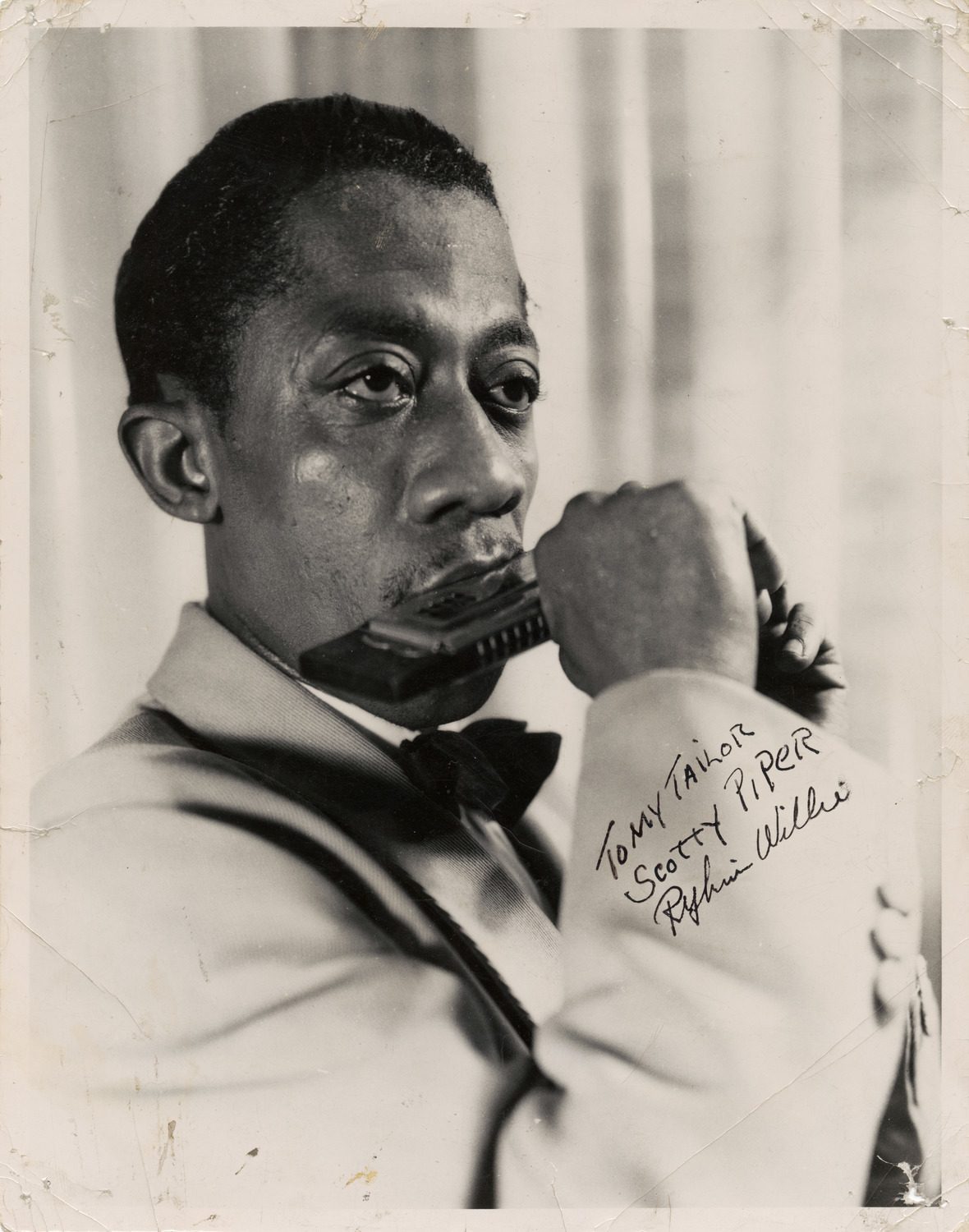In our latest blog post, CHM costume collection manager Jessica Pushor talks about the fascinating life of Louis “Scotty” Piper, his career as a tailor, and his generous donations to the Chicago History Museum. Piper is one of the designers featured in Treasured Ten: Selections from the Costume Collection, which runs through January 16, 2023.
A native of New Orleans, Louis Vernon “Scotty” Piper moved to Chicago in 1916. Three years later he found himself in the middle of the 1919 Race Riot. Piper fled the city, leading his family to believe he was killed. According to Piper, he briefly worked for a circus, quit when he reached Minneapolis, began performing the Charleston in dance competitions, and returned to Chicago in 1922.

Undated, hand-colored portrait of Scotty Piper in a suit. CHM, ICHi-174414
Later that year, Piper began working for Lew Fox, a tailor known for outfitting entertainers and gangsters. He learned to sew and began to establish his own clientele among local performers. In 1925, Piper opened his own tailoring business on 47th Street in Bronzeville, attracting both local and nationally known Black entertainers. For more than five decades, he created suits for prominent figures such as athlete Jack Johnson and entertainers including Duke Ellington, Cab Calloway, Count Basie, and Louis Armstrong. Piper’s shop was also a popular place for young Black men to purchase graduation suits, which he made for Harold Washington, Nat “King” Cole, Sam Cooke, and Lou Rawls, among others. As Piper’s career progressed, collecting photographs of his customers and other celebrities, as well as local clubs, became a hobby for him.

Piper (right) measures a man for a suit as two women in dresses stand and watch, c. 1940s-1950s. CHM, ICHi-174413
In 1975, Chicago Tribune reporter Clarence Page interviewed Piper about his 50 years in business on 47th Street and how the neighborhood had changed during that time span. The article also mentioned his collection of photographs and scrapbooks of Black entertainers and musicians that Piper had dressed and the clubs and theaters on 47th Street he visited, many of which had become legends in time. Thanks to the Tribune’s wide distribution, many people outside of Bronzeville and Chicago were introduced to Piper.

Autographed photograph of Piper measuring T-Bone Walker as Jack Williams and Snooky Marsh watch, 1944. CHM, ICHi-036108

An undated, signed headshot of Rhythm Willie. The inscription reads: “To my tailor Scotty Piper. Rhythm Willie.” CHM, ICHi-174228
John Triss, a graphics curator for what was then the Chicago Historical Society, saw the article and wrote to Piper hoping to expand “our very incomplete photo records of Chicago’s black people.” Piper agreed and donated about 300 photographs (c. 1920–69), mainly of Black entertainers and celebrities, but also some personal photographs of Piper, his family, and friends that reflect his involvement with social, church, and civic affairs. He also included miscellaneous letters from various African American organizations soliciting his aid or participation or thanking him for his contributions (1954–68). Finally, Piper also donated some men’s suits from his shop and from his own closet to the CHM costume collection. Thanks to his generous donations, as he told Clarence Page in 1975, “the old 47th Street can live forever.”
Additional Resources
- Peruse Scotty Piper’s archival collections in the Abakanowicz Research Center, which is free to visit
- See a selection of digitized images related to Scotty Piper